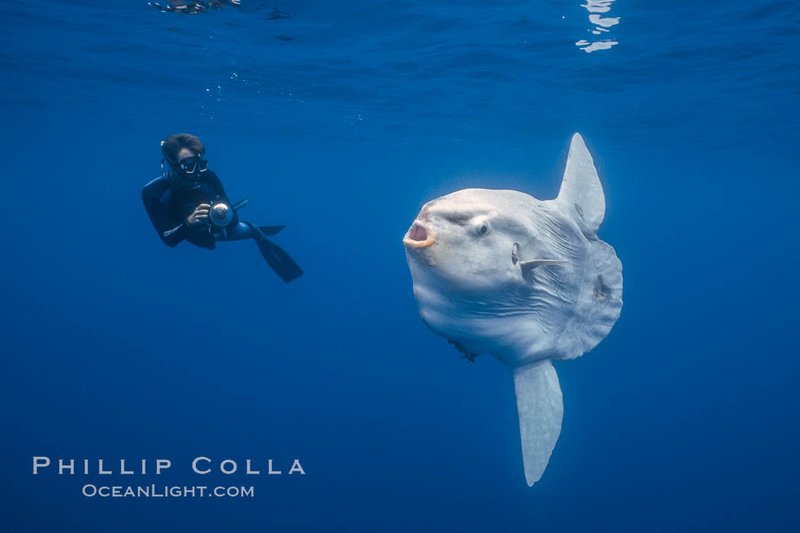
If you’ve ever seen a photo of a fish that looks more like a pancake than a typical ocean dweller, you’ve probably encountered the Ocean Sunfish. Known scientifically as Mola mola, this fascinating creature is unlike any other fish in the sea. Imagine a fish so large it’s often mistaken for a sunbathing rock. That’s the ocean sunfish for you!
The ocean sunfish holds the title for being the heaviest bony fish in the world. With its flat body and peculiar shape, it can weigh over 2,000 pounds and grow to be more than 10 feet long. But beyond its size, the sunfish is intriguing due to its lifestyle and behaviors. Let’s dive in and explore everything there is to know about this unique marine animal.
What is an Ocean Sunfish?
The ocean sunfish, or Mola mola, is a fascinating species of fish belonging to the family Molidae. Its body shape is very distinctive—broad and flattened, allowing it to glide gracefully through the water. This fish is often found in temperate and tropical oceans around the world, basking in the sun at the surface, which is how it earned its playful name.
One of the standout features of the ocean sunfish is its unique anatomy. It lacks a traditional fish tail. Instead, it has a large, rounded structure at the rear that resembles a fin. This design allows it to move effortlessly in the water and absorb warmth from the sun—a behavior often referred to as “sunbathing.” Imagine lying in the sun by the beach; that’s what these fish do, but underwater!
The ocean sunfish isn’t just a passive swimmer; it’s a creature of mystery. Researchers have observed its curious behavior, including interacting with boats and even approaching divers. They are known to be quite friendly, sometimes even rolling over to let seabirds clean their bodies of parasites. This kind of behavior shows that there’s much more to the sunfish than its unusual looks might suggest.
Habitat of the Ocean Sunfish
Ocean sunfish thrive in a variety of habitats, primarily residing in warm and temperate waters. You can find them in oceanic regions such as the Atlantic, Pacific, and Indian Oceans. They tend to stay in the open ocean, preferring the cooler depths during the day and rising to the surface at night. This unique pattern helps them find food while avoiding larger predators.
In terms of specific locations, sunfish are often spotted near coastal areas and continental shelves where they can find ample food sources. They typically enjoy a good sunbath, so you might see them lying near the surface, soaking up the sun’s rays. It’s not uncommon for fish lovers and researchers to spot them off the coasts of California, Hawaii, and even in the Mediterranean Sea.
Another interesting aspect of their habitat is their migratory behavior. Ocean sunfish can travel long distances throughout the year, sometimes moving towards cooler waters for feeding or during certain seasons. This nomadic lifestyle makes studying their habits a fun challenge for marine biologists.
Diet of the Ocean Sunfish
When it comes to eating, ocean sunfish have a rather interesting menu. They primarily feast on jellyfish, but they aren’t picky eaters. They may also consume a range of other soft-bodied animals like salps, plankton, and even small fish. Their diet richly reflects their lifestyle: they float and drift with the currents, snacking along the way.
One of the fascinating things about the sunfish’s feeding habits is their ability to consume a large volume of food. An adult ocean sunfish can eat up to 220 pounds of jellyfish in a single day! Imagine eating an entire pizza by yourself — times that by a hundred, and you have a sunfish’s day of munching. Their large mouths and unique gill structures allow them to filter and capture food effortlessly.
Despite their size and the amount they eat, sunfish are surprisingly gentle eaters. They rely on their size and their ability to float near the surface to capture food without needing to chase it. This leisurely approach to feeding means they can spend a lot of their day just relaxing in the ocean currents.
Physical Characteristics
Physical traits of the ocean sunfish are as unique as its behavior. As the heaviest bony fish, maturity brings this mighty creature’s weight to stunning levels. They typically reach lengths of about 10 feet, though some rare individuals can grow even larger! Their body is flattened from top to bottom, resembling a giant disc rather than a traditional fish.
Their skin is another remarkable aspect. It can be rough and covered with small scales, often featuring a gray or brownish hue punctuated with lighter spots. This coloration provides excellent camouflage against predators when they are resting in deeper waters. If you look closely, you might also see some barnacles or other small organisms clinging to their bodies. These little hitchhikers often live off the sunfish, showcasing a fascinating symbiotic relationship!
In terms of lifespan, ocean sunfish can live up to 10 years or more in the wild, although many face dangers such as fishing nets and pollution. Their unique design gives them an advantage in their environment, making them a captivating subject for both scientists and ocean lovers alike.
| Fact | Details |
| Scientific Name | Mola mola |
| Maximum Weight | 2,200 pounds |
| Length | Up to 10 feet |
| Habitat | Warm and temperate oceans |
| Diet | Primarily jellyfish |
| Lifespan | Up to 10 years |
Reproduction and Lifespan
Reproductive habits of the ocean sunfish are as intriguing as their daily lives. They are broadcast spawners, meaning females release their eggs into the water, where males then fertilize them. A single female can produce an astounding number of eggs—up to 300 million! That’s right: 300 million. It’s hard to fathom just how staggering that number is, yet only a fraction of these eggs will survive to adulthood due to predation and environmental conditions.
The spawning season varies by location but typically occurs in warmer months when food is abundant. After a few weeks, larvae hatch and drift along with ocean currents, engulfing tiny plankton as they grow. This continuing journey showcases the sunfish’s strategy for life: produce many, and hope a few thrive.
Though they can live for up to 10 years, many factors can influence their lifespan. For instance, human activity poses significant risks, such as entanglement in fishing gear or habitat degradation. Protecting the ocean sunfish is crucial for maintaining its remarkable presence in our seas.
Interactions with Humans
Ocean sunfish have a unique relationship with humans, one that’s both fascinating and delicate. They are often spotted by divers and fishermen, and their friendly demeanor can lead to exciting encounters. Some dive operators even offer special tours for sunfish viewing, turning them into a sought-after attraction in regions where they are frequently spotted.
However, this interaction isn’t always positive. Ocean sunfish are vulnerable to human activities, especially fishing. They often end up caught in nets while swimming near the surface. Awareness and conservation efforts are essential to ensure the future of these magnificent creatures. It’s our responsibility to protect them and their habitats so that future generations can appreciate their quirky charm.
The growing interest in the ocean sunfish also has led to research initiatives aimed at understanding their behaviors and ecology better. With technology such as satellite tracking, scientists are uncovering more about their migratory patterns and the role they play in the larger marine ecosystem. As we learn more about these creatures, our responsibility to safeguard them only deepens.
Conservation Status
The conservation status of the ocean sunfish is of concern. Although they are not currently considered endangered, their populations can be threatened by human activities. Fishing, pollution, and habitat degradation are significant challenges facing these magnificent creatures. Due to their size and unique traits, they sometimes end up as bycatch in commercial fishing nets, which can impact their numbers.
Organizations and researchers are increasingly focusing on the conservation of ocean sunfish and their habitats. Protecting marine ecosystems is vital for the sunfish’s future. We can all play a part by supporting sustainable fishing practices and advocating for clean ocean initiatives. The ocean sunfish is a reminder of the unique and beautiful biodiversity our oceans hold, and preserving it is crucial.
Public awareness campaigns and educational programs are also enhancing the understanding of ocean sunfish and their ecological significance. With ongoing efforts, we can ensure that this strange and wonderful fish continues to grace our oceans for generations to come.
FAQ
Are ocean sunfish dangerous to humans?
No, ocean sunfish are generally harmless to humans. They are gentle giants and prefer to bask and float rather than engage in aggressive behavior. However, like any wild animal, they should be respected and observed from a safe distance.
What do ocean sunfish eat?
Ocean sunfish primarily feed on jellyfish. They have also been known to eat salps, plankton, and small fish, showcasing their opportunistic feeding habits. Their diet varies depending on what is available in their habitat.
How do ocean sunfish stay warm in cold waters?
The ocean sunfish can regulate its body temperature by basking in the sun at the surface of the water. This behavior allows them to absorb warmth, which is crucial for their survival, especially in cooler environments.
How fast can ocean sunfish swim?
Ocean sunfish are not known for their speed. They typically swim at a leisurely pace, averaging about 1.5 miles per hour. However, when threatened, they can move more swiftly, relying on their size and unique body shape to navigate through the water effectively.
Where are ocean sunfish commonly found?
These fascinating fish inhabit warm and temperate oceans across the globe. They are frequently spotted near coastal waters, especially in regions like California, Hawaii, and parts of the Mediterranean. They often travel long distances, following currents to find food.
Do ocean sunfish have any predators?
While adult ocean sunfish are quite large and have few natural predators, young sunfish are more vulnerable. They may fall prey to larger fish, sharks, or even sea birds. Conservation efforts aim to protect not just the adults but all life stages of this unique species.
Can ocean sunfish be kept in aquariums?
Keeping ocean sunfish in aquariums is a challenge. Due to their large size and specific needs, they are not commonly found in captivity. Only a few aquariums have successfully housed them, and usually only for research or educational purposes.
How do ocean sunfish reproduce?
Ocean sunfish are broadcast spawners, releasing millions of eggs into the water where they are fertilized by males. This method allows for the production of many offspring, although only a small fraction survive to adulthood due to predation and environmental factors.
What makes ocean sunfish unique compared to other fish?
The ocean sunfish is unique due to its size, shape, and behaviors. Its flat, disc-like body, lack of a traditional tail, and sunbathing habits set it apart from other marine species. Additionally, their friendly interactions with fishermen and divers create a captivating experience for ocean enthusiasts.
How can I help protect ocean sunfish?
You can help protect ocean sunfish by supporting sustainable fishing practices, reducing plastic waste, and participating in ocean clean-up efforts. Educating others about the importance of marine conservation also plays an essential role in their protection.
Are ocean sunfish solitary or social animals?
Ocean sunfish are primarily solitary creatures, preferring to swim alone or with one another only for mating or cleaning purposes. However, they can sometimes be seen gathering in groups to warm up at the surface or share a feeding area, showing a blend of social interaction and individual behavior.
What are the threats to the ocean sunfish population?
The primary threats to the ocean sunfish population include bycatch in commercial fishing, habitat destruction, and pollution. Awareness and policies aimed at reducing these threats are critical to their conservation and survival in the wild.

